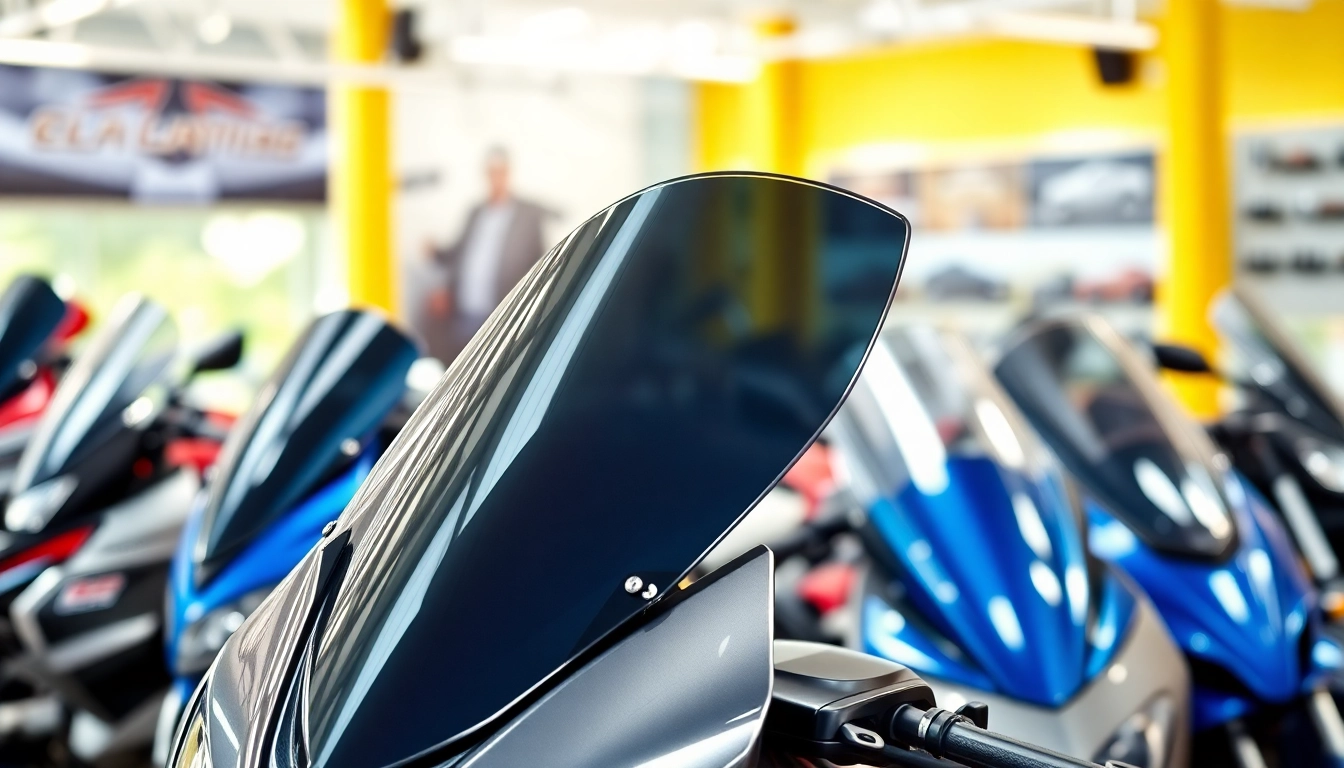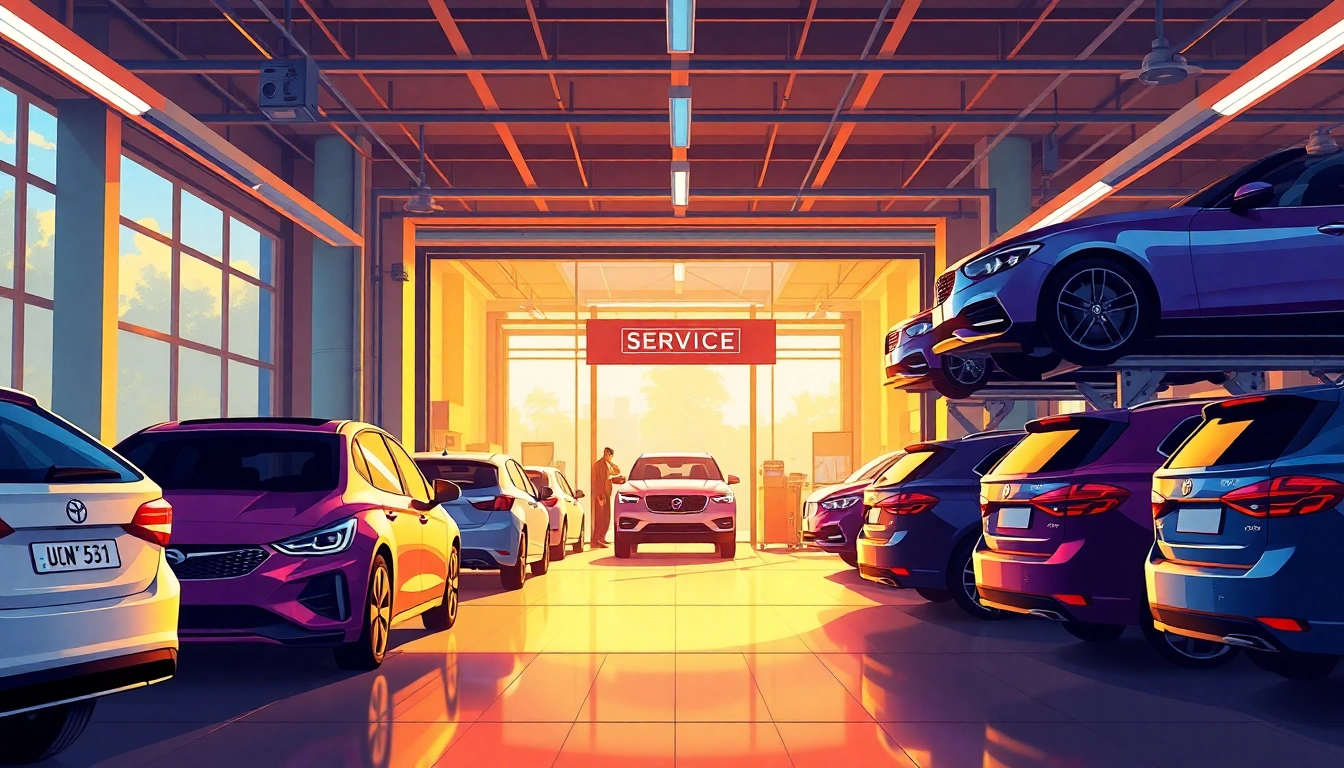Understanding Motorcycle Windscreens
What Are Motorcycle Windscreens?
Motorcycle windscreens, also known as windshields, are protective barriers installed on motorcycles to shield riders from wind, debris, and adverse weather conditions. They serve both functional and aesthetic purposes, enhancing a motorcycle’s performance while contributing to its overall appearance. Typically made from acrylic or polycarbonate materials, these windscreens come in various shapes, sizes, and tint options to cater to different types of motorcycles and rider preferences. The right motorcycle windscreens can significantly improve the riding experience, reducing fatigue on long journeys while providing essential protection against the elements.
Benefits of Using Motorcycle Windscreens
Motorcycle windscreens offer numerous advantages that enhance both safety and comfort for riders. Here are some of the core benefits:
- Wind Protection: One of the primary benefits is the reduction of wind resistance. Windscreens deflect airflow away from the rider, minimizing fatigue during long rides by decreasing strain on the arms and neck.
- Improved Visibility: High-quality windscreens can enhance visibility by reducing glare and distortion. Manufacturers employ advanced materials and technologies to ensure optical clarity, which is crucial for safe riding.
- Debris Shielding: Windscreens provide a protective barrier against road debris (like stones and insects) that can cause injuries or damage to the motorcycle’s components.
- Weather Protection: They also protect riders from rain, snow, and cold air, making all-weather riding more comfortable.
- Better Aerodynamics: An aerodynamic windscreens contributes to overall motorcycle performance, potentially improving fuel efficiency and stability at higher speeds.
Types of Motorcycle Windscreens Available
Motorcycle windscreens come in a variety of types, each designed to meet specific needs and preferences. Understanding these differences can aid riders in selecting the right windshield for their bikes:
- Full Windscreens: These provide maximum coverage and protection against wind and debris. Ideal for touring motorcycles, full windscreens often extend down to about the handlebars.
- Half Windscreens: Offering a balance between protection and a sporty appearance, half windscreens cover a smaller area while still providing some wind deflection.
- Mini Windscreens: Typically designed for sport or cruiser motorcycles, mini windscreens are compact and enhance the bike’s aesthetics while providing moderate wind protection.
- Custom Windscreens: Many brands allow for customization, enabling riders to choose specific shapes, sizes, and tints that suit their individual style and riding needs.
- Adjustable Windscreens: Some models feature adjustable heights or angles, allowing riders to modify airflow based on preferences or riding conditions.
Choosing the Right Windscreen for Your Motorcycle
Factors to Consider When Selecting a Windscreen
Choosing the right motorcycle windscreen is essential for optimizing your riding experience. Here are key factors to consider:
- Riding Style: Consider whether you primarily ride for leisure, commuting, or touring. Different riding styles may require different types of windscreens.
- Motorcycle Type: The design and size of your motorcycle play a significant role in determining the appropriate windscreen. Ensure compatibility to maintain functionality and aesthetics.
- Material: Look for materials that provide high optical clarity and scratch resistance. Polycarbonate is lightweight and impact-resistant, while acrylic offers a good balance of durability and clarity.
- Height and Shape: Taller windscreens generally provide better wind protection but may affect the motorcycle’s center of gravity. It’s important to find a balance that suits your body frame and riding posture.
- Installation Method: Some windscreens are easier to install than others. If you prefer DIY installation, look for models that come with clear instructions and all necessary hardware.
Aftermarket vs OEM Motorcycle Windscreens
When it comes to selecting a windscreen, riders are often presented with two options: OEM (Original Equipment Manufacturer) and aftermarket windscreens. Each has its pros and cons.
OEM Windscreens
OEM windscreens are manufactured by the same company that produced your motorcycle. This means they are designed specifically for your model, ensuring a precise fit and finish. However, they tend to be more expensive than aftermarket options and may have limited design choices.
Aftermarket Windscreens
Aftermarket options provide enhanced customization possibilities, with an array of styles, colors, and functionalities. They can be more affordable and, in some cases, offer superior performance or aesthetic appeal than their OEM counterparts. However, compatibility must be confirmed during the selection process, as not all aftermarket windscreens will fit every model perfectly.
Personalizing Your Windscreen: Style and Functionality
Personalization is a significant factor in the selection of motorcycle windscreens. Riders can choose options that not only meet functional requirements but also align with personal style and preferences. Some popular customization options include:
- Color Tints: Windscreens come in various tints, ranging from clear to dark shades. Color plays a role in both aesthetic appeal and glare reduction.
- Graphics and Designs: Many manufacturers offer windscreens with unique graphics, logos, or designs, allowing riders to showcase their personality.
- Special Features: Some models include features such as built-in air vents for enhanced airflow or integrated LED lighting, adding both functionality and flair.
Installation Basics for Motorcycle Windscreens
Tools You’ll Need for Installation
Installing a motorcycle windscreen can be a straightforward process if you have the right tools. Here’s a list of essential tools to gather before installation:
- Socket wrench set
- Screwdrivers (both flathead and Phillips)
- Rubber mallet (optional for gentle tapping)
- Measuring tape (for fitting compatibility)
- Cleaning cloth (to ensure the surface is clean and free of debris)
Step-by-Step Installation Guide
Following a systematic approach can make the installation of your motorcycle windscreen easy and efficient. Here’s a step-by-step guide:
- Prepare the Area: Park the motorcycle on a level surface and ensure it is stable. Remove any accessories or objects near the installation area that might obstruct your work.
- Remove the Old Windscreen: If replacing an existing windscreen, carefully unscrew the old windscreen using the appropriate tools. Keep the screws safe for potential reuse.
- Clean the Surface: Use a cleaning cloth to wipe the area where the new windscreen will be installed. This ensures a secure fit and prevents dirt from getting trapped.
- Position the New Windscreen: Align the new windscreen with the mounting points. Ensure that it is correctly oriented according to specific installation instructions.
- Secure the Windscreen: Using the provided screws or the old ones, securely attach the windscreen, making sure it is properly aligned and tight, but not overly so, to avoid cracking.
- Final Checks: Once installed, double-check that all screws are tight and that the windscreen is secure. Ensure no gaps exist that could allow airflow or debris to enter.
Common Installation Mistakes to Avoid
While installing a motorcycle windscreen can be a DIY task, there are common pitfalls that should be avoided to ensure a successful installation:
- Ignoring Manufacturer Guidelines: Always refer to the specific installation instructions provided by the windscreen manufacturer.
- Over-Tightening Screws: It’s crucial to secure screws without over-tightening as this can lead to cracks or breaks in the windscreen.
- Neglecting Cleaning: Failing to clean the mounting surface can inhibit the secure fit and potentially damage both the motorcycle and the windscreen.
- Skipping Compatibility Checks: Before purchasing, confirm the windscreen will fit your make and model to avoid compatibility issues during installation.
Maintaining Your Motorcycle Windscreen
Cleaning and Care Tips for Longevity
Maintenance is key to prolonging the lifespan of your motorcycle windscreen. Regular cleaning and care can keep the material clear and free of scratches:
- Use Gentle Cleaners: Avoid harsh chemicals; instead, opt for mild automotive cleaners or a mixture of soap and water for effective cleaning.
- Soft Cloth: Always use a soft, lint-free cloth to prevent scratches during cleaning.
- Regular Inspections: Routinely check the windscreen for any signs of wear, cracks, or scratches, addressing issues before they worsen.
Addressing Scratches and Damage
Scratches can detract from both the aesthetic and functional qualities of motorcycle windscreens. Here are steps for addressing scratches:
- Light Scratches: For minor scratches, polishing with a suitable plastic polish can help restore clarity. Apply sparingly with a soft cloth and follow with proper cleaning.
- Deep Scratches or Cracks: For more severe damage, it is often advisable to consult a professional or replace the windscreen altogether to ensure safe riding.
Storage and Protection Solutions for Windscreens
Proper storage and protection can prevent unnecessary damage when the motorcycle is not in use:
- Covering: Use a motorcycle cover that doesn’t scratch against the windscreen’s surface when parked outdoors.
- Indoor Storage: When not riding for extended periods, store your motorcycle indoors to shield it from weather elements that can degrade both the bike and the windscreen.
Latest Trends and Innovations in Motorcycle Windscreens
Advancements in Material Technology
Innovations in material technology are continuously enhancing the performance and durability of motorcycle windscreens. Manufacturers are increasingly adopting polycarbonate substrates with higher impact resistance and lighter weights without sacrificing clarity. New hard coatings provide improved scratch resistance and weatherability, extending both lifespan and visual quality.
Eco-Friendly Options in Windscreen Manufacturing
The motorcycle industry is slowly shifting towards sustainability, with some manufacturers exploring eco-friendly materials for windscreens. This not only lessens environmental impact but also appeals to environmentally conscious riders who appreciate sustainable choices.
The Future of Motorcycle Windscreen Design
The future of motorcycle windscreens looks promising, with trends leaning towards increased customization, smart technology integrations, and innovative designs that cater to rider comfort and safety. Features like integrated lighting, built-in solar panels for charging devices, or augmented reality displays might become commonplace as technology advances.



